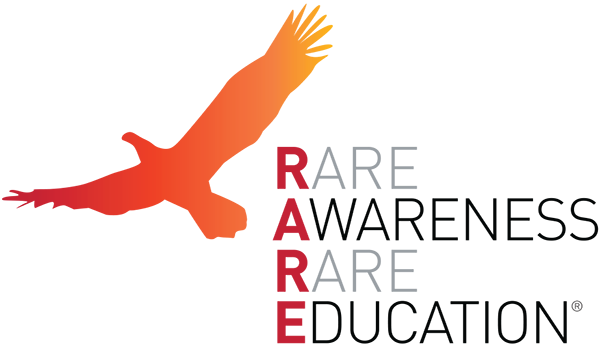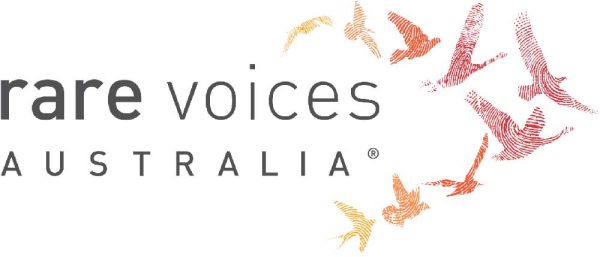Muscular dystrophy (Group of conditions)
Quick Search
- Summary
- Synonyms and Classifications
- Symptoms
- Disability Impacts
- Cause and Inheritance
- Diagnosis
- Treatment
- Clinical Care Team
- Clinical Care Guidelines
- Emergency Management
- Research
- Rare Disease Organisation(s)
- Lived Experience
- Support Services and Resources
- Mental Health
- Other Information
- Useful Links for Healthcare Professionals
Summary
Muscular dystrophy is a group of genetic conditions that cause muscle weakness and muscle loss (atrophy/muscle wasting).1,2 These conditions are progressive, with worsening of symptoms over time.2 Muscular dystrophy mainly affects the muscles that control movement (skeletal muscles) but in some cases, can affect involuntary muscles affecting the heart (cardiac muscles) and breathing (respiratory muscles) as the condition progresses.
The symptoms and extent of muscle weakness varies depending on the type of muscular dystrophy as well as between individuals with the same condition.2 Information on the different types of muscular dystrophy can be found at The Loop – Your Neuromuscular Resource Hub.
Please visit the individual pages for different types of muscular dystrophy on the RARE Portal. More of these individual pages will be developed in time.
Synonyms and Classifications
There are no known synonyms.
Universal rare disease classifications provide a common language for recording, reporting and monitoring diseases. Please visit the Rare Disease Classifications page for more information about these internationally recognised classifications.
Please refer to the individual muscular dystrophy conditions for their specific classifications.
Symptoms
Individuals with muscular dystrophy often experience muscle deterioration, impacting on muscle strength and function. Muscles that control movement (skeletal muscles) are usually affected first. In some cases, there are delays in motor development, particularly in learning how to walk.1 In other cases, the symptoms only present later, and individuals are observed to have trouble walking, have frequent falls and find it difficult to get back on their feet. They often lose their ability to walk over time and require a wheelchair. As the condition progresses, involuntary muscles become involved, resulting in issues affecting the heart (due to cardiac muscles) and breathing (respiratory muscles).1
Presentation of the disease often varies and individuals with the same type of muscular dystrophy can experience different symptoms, age of onset and disease progression.
Information about symptoms of a type of muscular dystrophy may be found at The Loop – Your Neuromuscular Resource Hub.
Please speak to your medical team to learn more about the symptoms for a specific type of muscular dystrophy.
Disability Impacts
Rare diseases are often serious and progressive, exhibiting a high degree of symptom complexity, leading to significant disability. Majority of the estimated two million Australians living with a rare disease meet the Australian Government’s definition for disability (in accordance to the Australian Public Service Commission and Australian Bureau of Statistics), and many experience severe and permanent disability impacts. If you or someone you care for is experiencing disability-related impacts from a rare condition, please speak with a health or disability professional for advice. Information about relevant disability support can be found at the RARE Portal’s Disability Support Information page.
Cause and Inheritance
Muscular dystrophy is caused by disease-causing genetic changes (variants) in a particular gene that affects muscles. The genetic variants can be inherited or acquired (random mutation).1 The exact genetic cause and inheritance pattern depends on the type of muscular dystrophy.
More information about the cause for specific types of muscular dystrophy can be found at The Loop – Your Neuromuscular Resource Hub.
If you would like to learn more about the inheritance and impact of this condition, please ask your doctor for a referral to a genetic counsellor. Genetic counsellors are qualified allied health professionals who can provide information and support regarding genetic conditions and testing. More information about genetic counselling can be found at:
- Information on Genetic Services
- The National and State Services pages underneath the ‘Genetic Counselling’ sections listed
Diagnosis
Muscular dystrophy may be diagnosed using a range of tests, including blood tests and genetic testing, muscle biopsies, tests for the muscles and nervous system, heart, as well as lung and breathing.1
More information about diagnostic tests for specific types of muscular dystrophy can be found at The Loop – Your Neuromuscular Resource Hub.
Please speak to your medical team to learn more about the available diagnostic pathways for a particular type of muscular dystrophy.
Treatment
There is currently no curative treatment for muscular dystrophy.1 In some cases, medication such as corticosteroids may help slow down disease progression. Treatment is mainly targeted at reducing or managing symptoms and improving quality of life, and involves a multidisciplinary care team. Management strategies varies depending on the type of muscular dystrophy and may include physiotherapy and occupational therapy, assistive equipment, mobility and medical aids.1,3 Information on how equipment and assistive technology can help can be found at The Loop – Your Neuromuscular Resource Hub: Equipment.
Information about treatment for specific types of muscular dystrophy can be found at:
Please speak to your medical team to learn more about the possible treatment or management options for your condition. Treatment will depend on an individual’s specific condition and symptoms. It is also important to stay connected to your medical team so that you can be made aware of any upcoming clinical trial opportunities.
Clinical Care Team
Clinical care for rare diseases often involves a multidisciplinary team of medical, care and support professionals. Please note that the information provided here is as a guide and that RVA does not necessarily monitor or endorse specific clinics or health experts.
Healthcare professionals involved in the treatment of muscular dystrophy may include general practitioners (GP), paediatricians, geneticists, cardiologists, respiratory physicians, physiotherapists, occupational therapists, hydrotherapists, podiatrists, dietitians, speech pathologists, psychologists, counsellors and social workers.3 The need for different healthcare professionals may change over a person’s lifetime and extend beyond those listed here.
More information about the relevant healthcare professionals for muscular dystrophy can be found at The Loop – Your Neuromuscular Resource Hub: Medical & Allied Health Support.
The Loop – Your Neuromuscular Resource Hub: NMC Clinics lists available specialist clinics provide care and support for children and adults living with certain neuromuscular conditions and other rare diseases across Australia, including muscular dystrophies.
Clinical Care Guidelines
There are no clinical guidelines available for muscular dystrophy as a collective. Clinical guidelines for a specific type of muscular dystrophy should be consulted where available.
Australasian Neuromuscular Network highlights international Standards of Care and Guidelines for a number of muscular dystrophies.
More information on Care Guidelines and a range of resources can be found at TREAT-NMD: Resources & support.
Emergency Management
Individuals living with rare diseases may have complex medical issues and disabilities, which are not always visible. It is often useful to refer to their medical history as well as personal information such as a medical card, doctor’s letter, or if available, a rare disease passport, for relevant information.
Emergency management of muscular dystrophy is specific to each condition.
It is important that people living with muscular dystrophy discuss emergency care with their treating healthcare professional – this may include information from a neurologist, cardiologist and/or respiratory physician.
Medical Alert Cards are available for some types of muscular dystrophy from Muscular Dystrophy Queensland.
Research
The Australian Neuromuscular Disease Registry is an Australian-wide registry that collects information about individuals with certain neuromuscular conditions, including muscular dystrophies. A list of the neuromuscular conditions on the registry can be found at Australian Neuromuscular Disease Registry: About us. The registry collects important medical information from adult and child patients across the country to improve the understanding of neuromuscular disease and accelerate the development of new therapies.
There are specific considerations around participating in rare disease research, including clinical trials. It is important to be mindful of issues such as data privacy, research ethics, consent and differences in research regulations between Australia and other countries.
If you are interested in finding clinical trials for your condition, please visit the following websites; however, there may not be any clinical trials available:
It is best to discuss your interest in any clinical trials with your medical team to determine suitability and eligibility.
Please note that RVA does not necessarily monitor or endorse each group/organisation’s operational governance and activities.
Rare Disease Organisation(s)
Australian Organisation:
Muscular Dystrophy Foundation Australia
Website: https://mdaustralia.org.au/
Muscular Dystrophy Foundation Australia (MDF) is the national voice for Australia’s neuromuscular community. MDF members are state and territory-based organisations which provide specialised support and services (including professional services as registered NDIS providers) for their neuromuscular communities.
State/territory-based organisations:
Capital Region Muscular Dystrophy
Website: https://www.crmd.org.au/
Muscular Dystrophy NSW
Website: https://mdnsw.org.au/
Muscular Dystrophy Queensland
Website: https://mdqld.org.au/
Muscular Dystrophy Tasmania
Website: https://musculardystrophytasmania.com.au/
Neuromuscular WA
Website: https://neuromuscularwa.org.au/
For individuals living in South Australia (SA) and Northern Territory (NT), please contact Muscular Dystrophy Foundation Australia.
For individuals living in Victoria (VIC), please contact:
Muscular Dystrophy Australia
Website: https://www.mda.org.au/
Please note that RVA does not monitor or endorse each group/organisation’s operational governance and activities. When engaging with a group, please consider the information on the RARE Portal’s Finding Helpful Peer and Community Supports page.
Lived Experience
The Loop – Your Neuromuscular Resource Hub: Living Life has stories and guides that offer lived-experience and tips from individuals with neuromuscular conditions, including muscular dystrophy.
Personal stories can also be found at the The Loop: Your Neuromuscular Resource Hub’s YouTube channel.
If you would like to share your personal story with RVA, please visit the Rare Voices Australia: Share Your Story page. RVA will consider your story for publishing on our website and inclusion on the RARE Portal.
Support Services and Resources
The Loop – Your Neuromuscular Resource Hub: Funding provides information on available social services that are relevant to the neuromuscular community.
The stated-based Muscular Dystrophy and Neuromuscular organisations provide a range of social services for people living within each state. Please see Muscular Dystrophy Foundation Australia’s State Partner Organisations for more information.
For information on available government and social services that provide support for individuals with a rare disease, please visit the National and State Services pages.
Mental Health
People living with a rare disease, including families and carers, often face unique challenges such as diagnostic delays, misdiagnoses, limited treatment options, and limited access to rare disease specialists and support. These challenges may impact people’s emotional wellbeing and quality of life. Many people find it helpful to seek mental health and wellbeing support to cope with ongoing stress and uncertainty. Connecting with people who have shared experiences through a support group may also be helpful. Information about relevant mental health and wellbeing support can be found at:
- Mental Health and Wellbeing Support for Australians Living with a Rare Disease
- The National and State Services pages underneath the ‘Mental Health’ sections listed
The Loop – Your Neuromuscular Resource Hub: Health and Wellbeing provides health and wellbeing information that is relevant to the neuromuscular community, including for muscular dystrophies.
Other Information
Further information on muscular dystrophies can be found at:
- healthdirect: Muscular dystrophy
- Australasian Neuromuscular Network
- TREAT-NMD – global network of experts in the neuromuscular field
- Muscular Dystrophy Association (United States of America)
Useful Links for Healthcare Professionals
- Australasian Neuromuscular Network: Resources for Health Professionals
- TREAT-NMD – global network of experts in the neuromuscular field
- The Loop – Your Neuromuscular Resource Hub: Resources for Health professionals and disability support workers
References
- healthdirect. Muscular dystrophy. Accessed 8 November 2023. https://www.healthdirect.gov.au/muscular-dystrophy
- Raising Children Network. Muscular dystrophy: children & teens. Accessed 14 November 2023. https://raisingchildren.net.au/guides/a-z-health-reference/muscular-dystrophy
- The Loop – Your Neuromuscular Resource Hub. Accessed 2 November 2023. https://theloopcommunity.org/
Contributors
This page has been co-developed by Rare Voices Australia (RVA)’s RARE Portal team in consultation with Neuromuscular WA, as a nominated representative of Muscular Dystrophy Foundation Australia.
If you are aware of any additional information that may benefit stakeholders with an interest in this page, or if you notice any broken links or inaccurate information, please let us know via the Contribute page.

